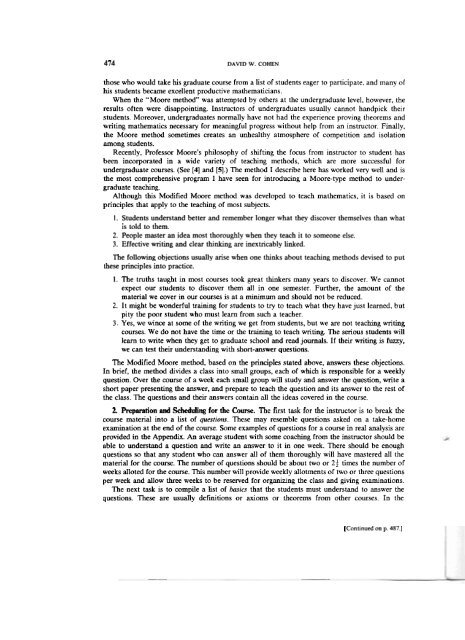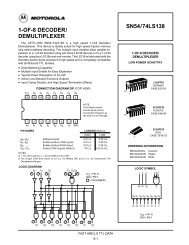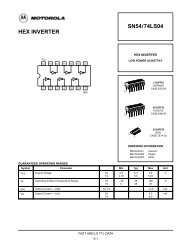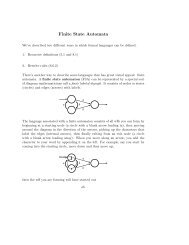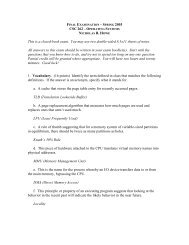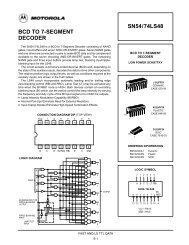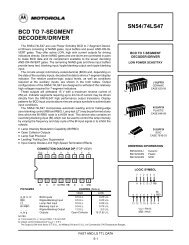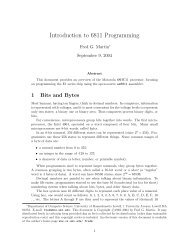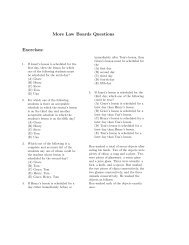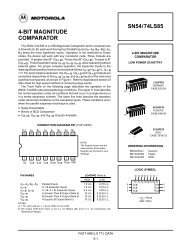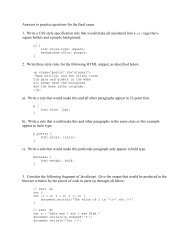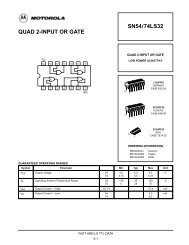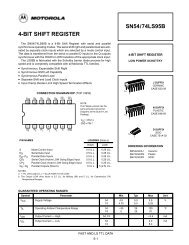Modified Moore method - Smith College
Modified Moore method - Smith College
Modified Moore method - Smith College
You also want an ePaper? Increase the reach of your titles
YUMPU automatically turns print PDFs into web optimized ePapers that Google loves.
474 DAVID W. COHEN<br />
those who would take his graduate course from a list of students eager to participate. and many of<br />
his students became excellent productive mathematicians.<br />
When the "<strong>Moore</strong> <strong>method</strong>" was attempted by others at the undergraduate level, however, the<br />
results often were disappointing. Instructors of undergraduates usually cannot handpick their<br />
students. Moreover, undergraduates normally have not had the experience proving theorems and<br />
writing mathematics necessary for meaningful progress without help from an instructor. Finally,<br />
the <strong>Moore</strong> <strong>method</strong> sometimes creates an unhealthy atmosphere of competition and isolation<br />
among students.<br />
Recently, Professor <strong>Moore</strong>'s philosophy of shifting the focus from instructor to student has<br />
been incorporated in a wide variety of teaching <strong>method</strong>s, which are more successful for<br />
undergraduate courses. (See [4] and [S].) The <strong>method</strong> I describe here has worked very well and is<br />
the most comprehensive program I have seen for introducing a <strong>Moore</strong>-type <strong>method</strong> to undergraduate<br />
teaching.<br />
Although this <strong>Modified</strong> <strong>Moore</strong> <strong>method</strong> was developed to teach mathematics, it is based on<br />
principles that apply to the teaching of most subjects.<br />
1. Students understand better and remember longer what they discover themselves than what<br />
is told to them.<br />
2. People master an idea most thoroughly when they teach it to someone else.<br />
3. Effective writing and clear thinking are inextricably linked.<br />
The following objections usually arise when one thinks about teaching <strong>method</strong>s devised to put<br />
these principles into practice.<br />
I. The truths taught in most courses took great thinkers many years to discover. We cannot<br />
expect our students to discover them all in one semester. Further, the amount of the<br />
material we cover in our wurses is at a minimum and should not be reduced.<br />
2. It might be wonderful training for students to try to teach what they have just learned, but<br />
pity the poor student who must learn from such a teacher.<br />
3. Yes, we wince at some of the writing we get from students, but we are not teaching writing<br />
courses. We do not have the time or the training to teach writing. The serious students will<br />
learn to write when they get to graduate school and read journals. If their writing is fuzzy,<br />
we can test their understanding with short-answer questions.<br />
The <strong>Modified</strong> <strong>Moore</strong> <strong>method</strong>, based on the principles stated above, answers these objections.<br />
In brief, the <strong>method</strong> divides a class into small groups, each of which is responsible for a weekly<br />
question. Over the course of a week each small group will study and answer the question, write a<br />
short paper presenting the answer, and prepare to teach the question and its answer to the rest of<br />
the class. The questions and their answers contain all the ideas wvered in the course.<br />
2. Preparation and Scheduling for the Course. The first task for the instructor is to break the<br />
course material into a list of questions. These may resemble questions asked on a take-home<br />
examination at the end of the course. Some examples of questions for a course in real analysis are<br />
provided in the Appendix. An average student with some coaching from the instructor should be<br />
able to understand a question and write an answer to it in one week. There should be enough<br />
questions so that any student who can answer all of them thoroughly will have mastered all the<br />
material for the course. The number of questions should be about two or 24 times the number of<br />
weeks alloted for the course. This number will provide weekly allotments of two or three questions<br />
per week and allow three weeks to be reserved for organizing the class and giving examinations.<br />
The next task is to compile a list of bmics that the students must understand to answer the<br />
questions. These are usually definitions or axioms or theorems from other courses. In the<br />
[Continued on p. 487.1


